Extreme tourism: ‘If it was safe, that’s not an adventure’
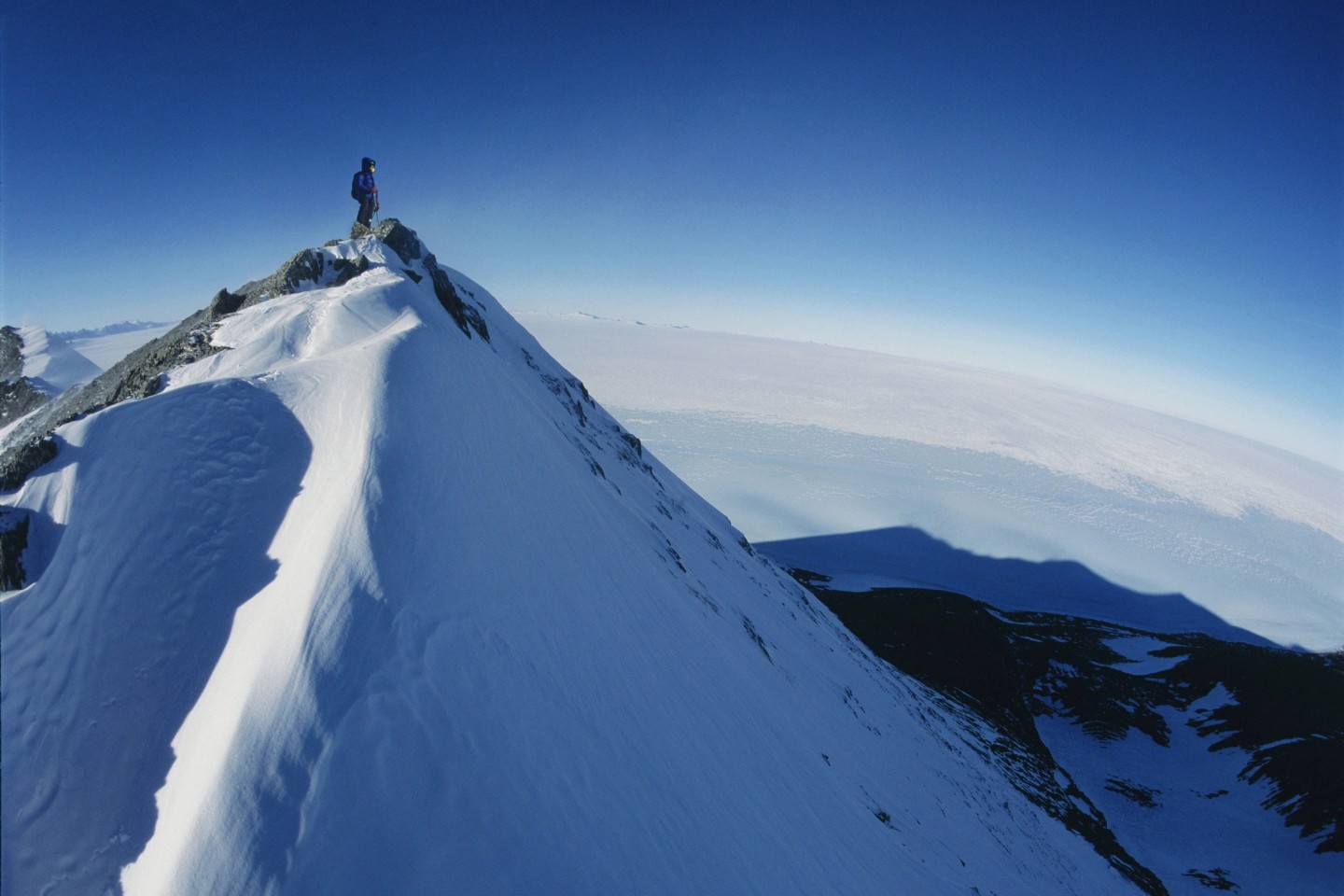
Roula Khalaf, Editor of the FT, selects her favourite stories in this weekly newsletter.
Tomaž Rotar knows a thing or two about life and death in extreme environments. In February 2021, the Slovenian oral surgeon was sitting inside a cramped tent 7,300m up K2, the world’s second highest mountain. More than 20 climbers had gathered in the dark on the snowbound ledge, arriving at the camp in worsening winds and temperatures that were already below -30C.
To stand a chance of reaching the summit as the weather window they had been chasing began to close, they would have to set off again almost immediately.
Most of the climbers there that night did the sane thing; they sat tight and descended at dawn, many swallowing the fact that they had paid guiding companies at least £20,000 for a chance to reach the summit in winter, a feat that had been achieved for the first time only weeks earlier. Others felt moved to step back into the darkness and attempt what they had flown halfway around the world to do.
Rotar was among seven climbers who made the decision to go on. He only turned back hours later when he came across an unexpected crevasse. Three other climbers managed to get across it, and continued. When they failed to return, a frantic search gripped the world’s media as military helicopters and even a fighter jet scoured K2.
All three men died that night. It would be months before their frozen bodies could be found. As Rotar has followed news updates about the Titan submersible this week with a familiar feeling of dread, he has been reflecting on the calculations wealthy adventurers make when they face that vital decision: do we stay, or do we go?
“It’s the same kind of people who feel the same kind of draw, whether it’s to go deep under the sea, or to climb very high, or to run very far,” he says. “It’s a kind of sickness, like a venom in your veins that makes you want to go. Because you want that beautiful feeling that comes when the danger is over and you know you have achieved something. And then you don’t even know how you lived before that, so you go back and you do it again.”
At the extreme and often prohibitively costly end of the travel industry, a niche has grown to meet demand for variations on that same feeling. From the oceans, to the mountains, to polar ice sheets, to active volcanoes — and now the vast expanse of space — people are increasingly prepared to pay small fortunes in pursuit of big, sometimes dangerous dreams.
Even the South Pole — which, after Scott’s ill-fated visit in 1912, went unvisited by humans until 1956 — is now offered in tourist brochures. The US Amundsen-Scott South Pole station is shadowed by another facility, about half a mile away: a tourist camp that welcomes visitors with a sign announcing “the world’s southernmost resort”. Antarctic Logistics & Expeditions, which runs the camp, offers a range of ways to get there, including the “South Pole Overnight” trip at $65,000 — guests simply fly there and back (and are presented with a certificate on their return).
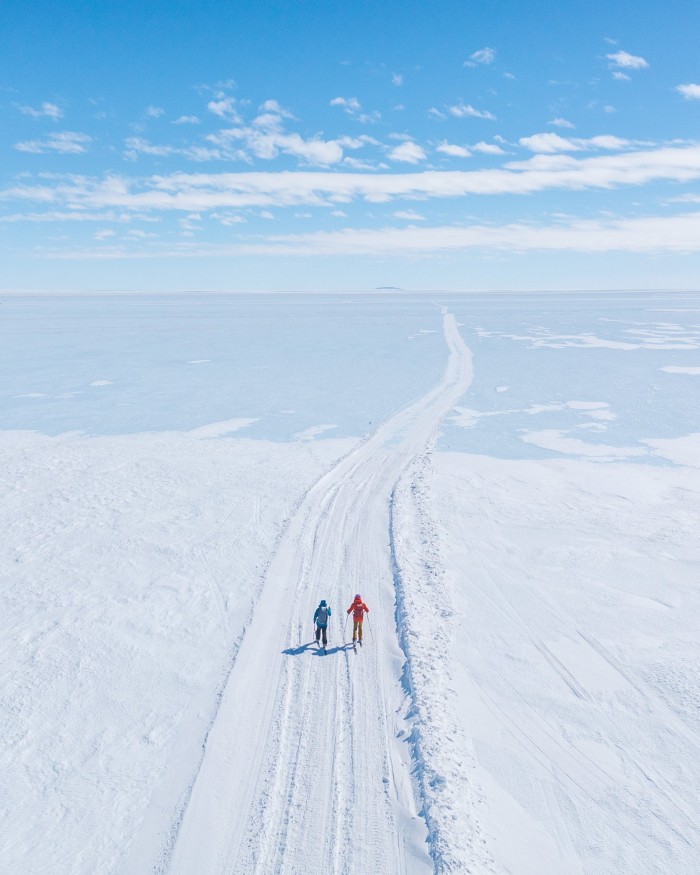
Interest in visiting Antarctica — the world’s coldest, highest, windiest continent — is surging, with the large majority of people arriving via cruise ships and landing in small boats. The number coming ashore doubled from 26,000 in the 2014/15 austral summer season to reach 55,000 in 2019/20. (Data from the International Association of Antarctica Tour Operators also records some of the activities they undertook: the most recent season saw tourists go stand-up paddleboarding 598 times, snorkelling 1,661 times, snowboarding 766 times and making 4,217 dives in submersibles.)
As with other areas of the “extreme tourism” world, tour operators are increasingly blurring the lines between holidays and expeditions. As well as fly-in trips to the South Pole, ALE offers a range of itineraries that casual observers would assume were the preserve of professional explorers. Want to ski from the edge of the continent to the Pole, a 60-day epic, battling temperatures down to -30C? Just head to the ALE website and, if you can manage the $85,000 price tag, click the “book now” button. The trip will be led by an experienced guide (though it’s up to you whether you mention that in your press release and Insta-posts).
Particularly popular is the “ski the last degree” expedition, where guests are dropped by plane 69 miles from the Pole (one degree of latitude), then trek there on skis over about five days, giving those on a tight schedule the flavour of a classic polar crossing. According to IAATO, numbers taking part in the $75,000 trip tripled in the three years to 2019; those interested can head off on December 7 or 14, or January 4 next year.
“We push our clients as far as they want to go, from abseiling to zip lining to getting a taste of what it’s like being a polar explorer,” says Patrick Woodhead, a record-breaking Antarctic adventurer and founder of the luxury Antarctic operator White Desert.
Starting in 2005 with three tents and two clients, White Desert now runs three camps, each for 12 guests, offering cocktails and chef-prepared meals, a yoga pod, sauna and library. Transport options include a Gulfstream private jet (a service that Hamish Harding, one of the five people who died on the Titan submersible, was involved in setting up); clients typically pay around $100,000 per visit. “I think that this kind of travel is exactly what people are looking for,” says Woodhead. “When people come to Antarctica, they are disconnected from their phones . . . they’re in an otherworldly situation and environment and that very much changes people.”
Though tourism is growing more normal in Antarctica, risks remain. The US Coast Guard is currently carrying out an investigation after four cruise-ship tourists were killed in three incidents at the end of 2022. Two died after an inflatable boat capsized, one when a “rogue wave” hit the ship, and another fell and hit his head in rough waters.
Yet one of the odd things about extreme tourism is that risk seems to attract rather than deter customers. Just two days after a volcano erupted on White Island off New Zealand in 2019, killing 22 people, a boat guide in Whakatāne, the town closest to the volcano, told reporters that he had begun receiving new inquiries from tourists who wanted to go there. One woman wanted to see White Island close up “to feel the fury”.
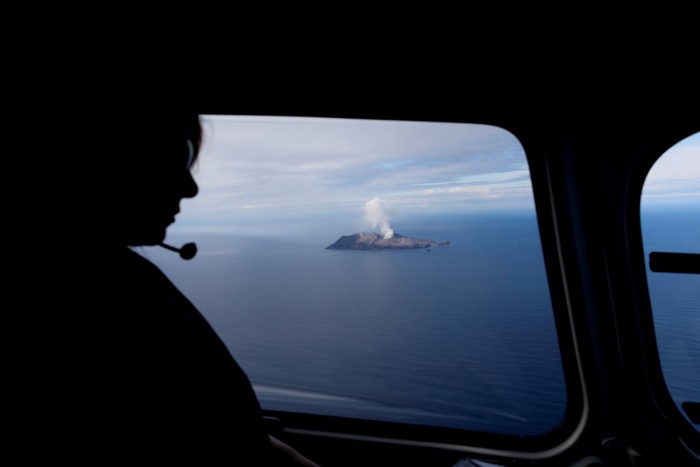
“It’s the same kind of thing that the Romantic poets talk about when they talk about the sublime in nature, the spectacles that take us out of ourselves and transcend the day-to-day human experience,” says Amy Donovan, a geographer and volcanologist at Cambridge university who has watched demand grow ever higher for proximity to spewing ash and lava. When Fagradalsfjall erupted in Iceland’s Reykjanes peninsula in March 2021, more than 350,000 people flocked to the site over the following 10 months.
After two people died in the Clipper Round The World yacht race in 2015/16, applications increased. When the celebrated US extreme skier Doug Coombs was killed in 2006 in an accident in La Grave, France, an event reported at the time as “like Superman dying”, guides noticed an uptick in inquiries from American tourists wanting to ski there.
Disaster also sells in the Himalayas. The deadly 2021 winter season on K2 — which claimed the lives of two climbers in falls, as well as the three who were lost near the summit — only increased demand for attempts on a mountain that is far more dangerous than Everest. Last summer, about 200 people reached the summit of K2, more than triple the previous record.
“People want to climb Everest because it’s dangerous and involves risk,” says Lukas Furtenbach, an Austrian mountain guide specialising in premium expeditions to Mount Everest (his packages cost up to $217,000, including personalised, professional-level video and photography). “If nobody died and it was 100 per cent safe, that’s not an adventure and I think demand would decrease.”
This year’s Everest season saw a record number of climbers — and a record number of deaths, 17. Furtenbach, whose clients all safely reached the summit, is increasingly concerned about what is happening when money, ego and the human urge to seek thrills collide in dangerous places. “I would say 14 of these deaths could have been avoided with very simple safety protocols,” he says. “Four of them were clients who went missing on summit day. Other people ran out of oxygen. These things should be impossible, and it’s happening because operators are not regulated.”
Not all extreme travel involves physical exertion. Woodhead, the White Desert founder, is this weekend in Equatorial Guinea, speaking at the inaugural “Most Traveled People” conference. The event caters to “competitive travellers”, a rapidly expanding group who attempt to visit as many places as possible on Earth, logging their visits online to climb up the league tables. Having decided the 193-long list of UN-recognised countries was too easy to complete, enthusiasts have divided the world further — MTP’s list now runs to 1,500 countries, regions, territories, dependencies, island groups and so on. (Currently top of the leaderboard is Harry Mitsidis, 51, who has reached 1,362 of them).
MTP is not alone. Since 2009, the Extreme Traveler International Congress has run meetups for tourists wanting to go beyond the brochures. Venues have included Baghdad, Mogadishu and Rockall, a granite islet in the north Atlantic.
“I think there’s a growing awareness that it’s possible to get to these kind of places,” says James Willcox, whose company Untamed Borders offers trips to destinations including Afghanistan, Syria and Yemen and has organised events for ETIC. “Previously, if a destination wasn’t in the Thomas Cook brochure and there wasn’t a Lonely Planet guidebook, people just had zero information. Now it is fairly easy to find out about anywhere online, and social media has this normalising effect — once you start looking, you see that other people are going, however unlikely the destination.”
The drive to tick boxes and complete defined challenges runs through much extreme travel. As reaching the “seven summits” (the highest mountain on each continent) has become common, adventurers have strived for the “explorer’s grand slam” (the seven summits plus North and South Pole), or even the “explorer’s extreme trifecta” (the highest and lowest places on Earth, Everest and Challenger Deep in the Mariana Trench, as well as space). A new generation is now rushing to climb all 14 of the world’s 8,000m peaks, often using extensive helicopter support to do so. Critics have pointed out that the approach creates a small number of “honeypot” objectives, while ignoring less well-trodden paths.
The wider phenomenon of buying adventure has long precedents, says Leo Houlding, a professional climber with a string of groundbreaking expeditions to his name. “Since the beginning of exploration, wealthy people have patronised and paid to join expeditions,” he says. “In the so-called golden age of European alpinism, the peaks were being climbed by rich Britons using hired local guides — some were probably good climbers, others were probably paying to go so they could dine out on it.” Nevertheless, the trend has “exploded” in the past decade, he says.
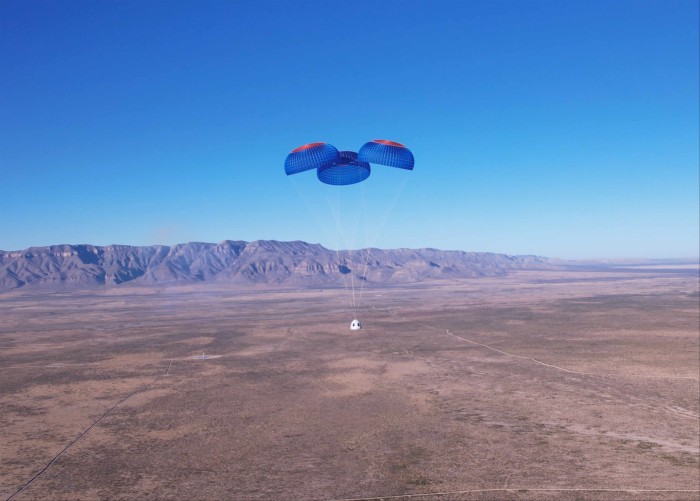
Space offers the lure of a new frontier. Virgin Galactic is due to launch its first commercial space flight next week — a two-hour experience that will reach about 55 miles above the Earth’s surface. Already 800 people have bought tickets, which now cost $450,000. Meanwhile, the Jeff Bezos-owned Blue Origin rocket reaches 62 miles in a flight of just 11 minutes; since its first crewed flight in 2021, passengers have included the Star Trek actor William Shatner, the undersea explorer Victor Vescovo and Hamish Harding.
A more leisurely option is Space Perspective, an eight-person capsule that will be carried to about 19 miles (the stratosphere, rather than space) beneath a balloon. Guests are promised “No rockets. No g-force” but rather a gentle “meticulously crafted” six-hour flight “complete with a meal and cocktails”. The company hopes to launch late next year, tickets are already on sale at $125,000 per head.
Many of the operators are developing tourism and commercial space travel in tandem, and extreme travel increasingly cleaves close to science and conservation. Whereas White Desert’s Woodhead started his company by hitching a lift on a Russian cargo plane taking scientists to Antarctica, he says his planes now deliver about 250 scientists to the continent each year, the same number as his high-paying tourists. Original Travel is currently offering a £52,000-per-person trip to Botswana in which tourists will help with the release of a dozen relocated rhinos.
Jimmy Carroll of tour operator Pelorus recently organised a trip for a wealthy family that involved chartering a yacht with an on-board helicopter to Antarctica. At the client’s request, Carroll organised the charter of a second yacht, with a second helicopter, to accommodate a team of research scientists who would also teach the client’s 12-year-old daughter.
Pelorus offers access to submersibles too, of the sort that have become de rigueur aboard expedition superyachts — the increasingly in-demand vessels designed to access the harshest seas without sacrificing comfort. Some of Carroll’s clients recently chartered U Boat Navigator, a 24m yacht which sleeps six and is equipped with two submersibles. Both are built by Triton, whose underwater vehicles, which cost up to $40mn, have been used to film the BBC Blue Planet series. The Florida company was given a boost last year when it welcomed two new investors: the billionaire American hedge fund manager Ray Dalio and James Cameron, the Titanic movie director and submariner.
“People are intrigued by the fact that 70 per cent of the world is covered by water and we have seen very little of it,” Carroll says. “And I think the likes of David Attenborough’s programmes have definitely helped spark imaginations.”
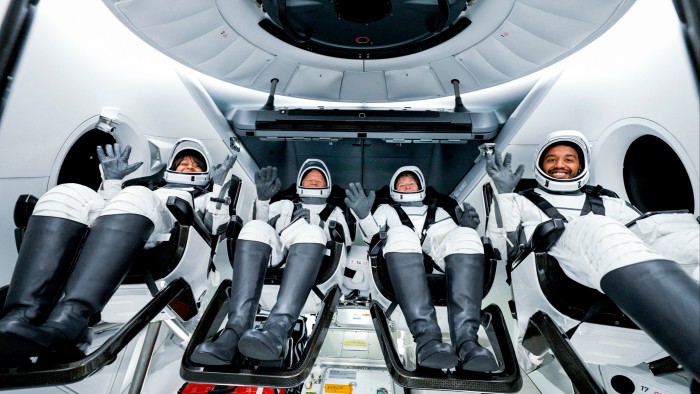
Perhaps the most extreme tourist of all splashed back down to Earth last month after an eight-day visit to the International Space Station. John Shoffner, 67, former chief executive of the fibre-optic cable company Dura-Line, was one of three astronauts who had bought places on Axiom’s second trip to space; the company hasn’t said how much they paid but previously reported ticket prices of $55mn. Like many adventurers, Shoffner has form across multiple disciplines: he takes part in 24-hour car races at Germany’s Nürburgring, skydives and BASE-jumps and has raced across America by bike without support.
Why does he do these things? “Well, they’re fun,” he says. “They help you find your edge — I would say your limit, but you don’t really want to find the limit.”
Find out about our latest stories first — follow @ftweekend on Twitter
Letter in response to this article:
Risking death at the ends of the earth costs us all / From Chris Hunter, Farnham, Surrey, UK
Comments